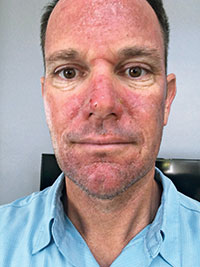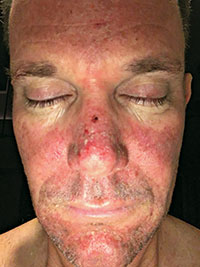“Slip, Slop, Slap.”
It may sound silly, but this Australian slogan could save your life.
“Slip, Slop, Slap.”
When I was growing up in Australia, we often heard this slogan, created to promote skin cancer awareness by reminding you to slip on a shirt, slop on some sunscreen and slap on a hat. It was catchy and had kids all over the country singing the accompanying jingle.
I wish I could now go back in time and follow, without question, those basic recommendations. Now in my 40s, visits to my dermatologist have become a recurring practice because of the repeated sun damage I experienced as a child, teenager and young adult.
I remember on numerous occasions being burned to a crisp after a day on the beach or an afternoon playing outdoor sports. Forget the zinc cream, wide-brimmed hats and long sleeves — I was the typical bronzed Aussie but without the blue eyes and blonde hair. Over the past five years, the reality of all those days spent out in the sun has caught up with me.
That’ll leave a mark
In 2011, a suspicious raised area below my left eye was diagnosed as a squamous cell carcinoma, and I subsequently went through my first Mohs surgery. Mohs surgery is a precise surgical technique in which thin layers of cancer-containing skin progressively are removed. Each layer undergoes microscopic examination until only cancer-free tissue remains. Examination of each layer occurs during — rather than after — the surgery, eliminating the need to estimate how far out or deep go the roots of the skin cancer.
I previously had concerning-looking areas burned off the back of my hands and side of my face with liquid nitrogen (cryosurgery). That hadn’t worried me too much. However, after having a 4-inch incision cut into my face and dealing with the subsequent scar, I became a lot more conscious of the effects of the sun.
This year, after one of my routine visits, the dermatologist discovered another squamous cell carcinoma, this time on my left upper eyelid. A second Mohs surgery removed a quarter of my eyelid to rid me of this potentially lethal cancer. Thankfully, the eyelid was sewn back together with precision, and the offending area is barely visible.
In follow-up visits to assess my recovery, my dermatologist recommended a blue-light treatment for my face because of evidence of actinic keratosis, a skin condition that can become cancerous. In this case, a liquid product (Levulan) was applied to my entire face and left for two hours to absorb into the skin. I then was subjected to 12 minutes of blue-light therapy that was one of the most uncomfortable experiences of my life. For those 12 minutes, it felt like I had fallen face down in a pile of angry fire ants or landed face first into a bowl full of Pop Rocks candy with thousands of tiny explosions going off at once. The stinging sensation was only moderately subdued by self-application of cool air through a tube.
This treatment immediately made my face appear quite red and left the feeling of being sunburned. The following days were some of the most depressing of my life. The treatment identifies precancerous lesions and causes them to redden, swell and blister before finally becoming scaly and sloughing off.
I had a lot of these areas and my entire face was affected. This lasted for almost six days before a baby-smooth skin miraculously appeared underneath. This was only the first of three treatments scheduled over the following three months, with follow-up treatments in April and July.

 David Dore-Smith says treatment for actinic keratosis was “painful, uncomfortable and embarrassing for a few days,” but still a small price to pay.
David Dore-Smith says treatment for actinic keratosis was “painful, uncomfortable and embarrassing for a few days,” but still a small price to pay.
It won’t go away on its own
Now that I’ve fully recovered from the first treatment, I must admit I’m glad I went through with the procedure. Yes, it is painful, uncomfortable and embarrassing for a few days, but I firmly believe that if I had not addressed the issue when I did, my future wouldn’t be so bright.
Precancerous areas will not improve on their own and they only get worse. As your skin ages, it is less likely to recover from these type of procedures, and the use of liquid nitrogen to freeze affected areas simply is not enough to do the job and only masks underlying issues.
I encourage you to visit a dermatologist annually. If you don’t have a dermatologist, ask one of your peers at your next chapter meeting who they see, and make an appointment with their doctor.
For chapters looking to add a benefit to a local meeting, consider inviting a dermatologist to give a presentation on skin cancer awareness and provide some free screening advice for your members. I now provide wide-brimmed hats and free sunscreen to my employees, and I encourage them to wear polarized sunglasses. One ounce of prevention is worth a pound of cure.
Although it’s a silly slogan, please remember to Slip, Slop, Slap, and help prevent the world’s most common form of cancer — skin cancer.
Photos: Golfdom Staff








